Here are 5 ways to cook salmon. I have even more recipes with salmon below and a list of great side dishes.
How to Cook Salmon 5 Ways
All of these recipes are seasoned with salt and pepper. You can use my super simple salmon spice blend I listed below for more flavor.
Pan Fry
- Heat 2 tablespoons of oil in a large nonstick skillet over medium-high heat. Pat salmon dry with a paper towel and season with salt and pepper or your favorite spice blend.
- Once the oil is hot, place the salmon in the skillet skin side up (if the salmon has skin). Cook until golden brown, about 4 minutes, then flip and cook for 4 more or until the internal temperature is 145F.
Oven
- Preheat oven to 425F.
- Line a baking sheet with foil. Place salmon on the baking sheet and pat dry with a paper towel. Drizzle olive oil over salmon and season with salt and pepper or your favorite spice blend.
- Bake for 10 minutes if your salmon is 1 inch thick and 15 minutes if your salmon is 1 ½ inches thick. Your salmon is done when it has reached an internal temperature of 145F and can easily flake.
Broil
- Move the top oven rack to be about 6 inches away from the top broiling element. Burn the broiler on high.
- Line a baking sheet with foil. Place salmon on the baking sheet and pat dry with a paper towel. Drizzle olive oil over salmon and season with salt and pepper or your favorite spice blend.
- Broil for 6-10 minutes. Your salmon is done when it has reached an internal temperature of 145F and can easily flake.
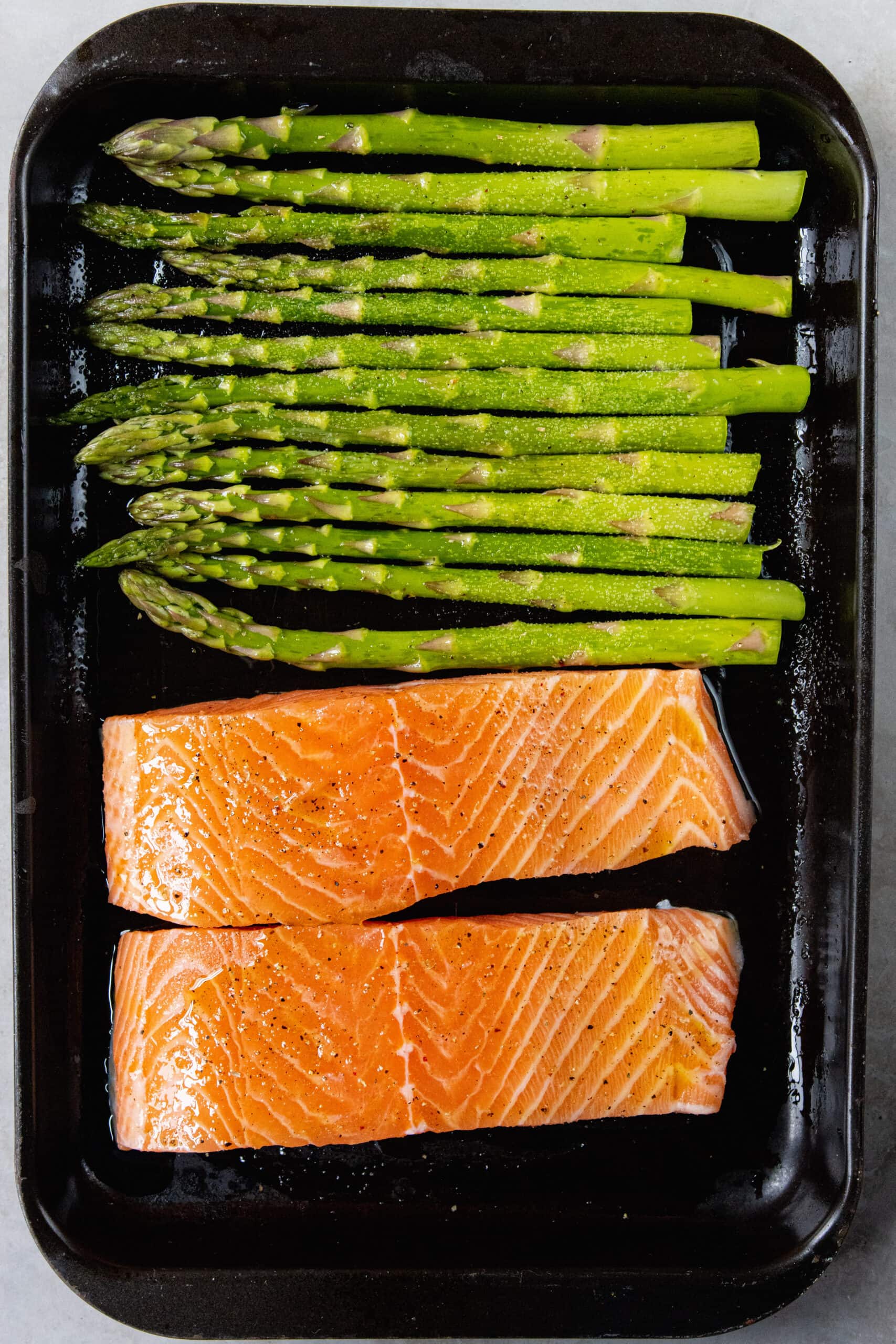
Parchment Pack
- Preheat the oven to 400F
- Lay out parchment paper on a flat surface.
- Place a salmon fillet, skin side down, in the center of the parchment paper. Drizzle with 1 tablespoon of olive oil. Season each salmon fillet with salt and pepper or your favorite spice blend.
- Fold the parchment paper in half over the salmon fillet, then fold the edges over and over until the packet is tightly sealed.
- Repeat with the remaining salmon fillets.
- Place the parchment packets on a baking sheet and bake for 15-20 minutes. The salmon is done when it has reached an internal temperature of 145F and can easily flake.
Air Fryer
- Pat salmon dry with a paper towel. Drizzle olive oil over salmon and season with salt and pepper or your favorite spice blend.
- Preheat the air fryer to 400F.
- Place salmon in an air fryer (skin side down if the salmon has skin), and cook for 8 minutes if the salmon is 1 inch thick and 12 minutes if it is 1 ½ inches thick. Your salmon is done when it has reached an internal temperature of 145F and can easily flake.
Jump to:
Super Simple Salmon Spice Blend
- 1 tablespoon smoked paprika
- 1 tablespoon garlic powder
- 2 teaspoons onion powder
- 2 teaspoon salt
- 1 teaspoon black pepper
- 1 teaspoon dried thyme leaves
What to Eat with Salmon
- Mediterranean Rice
- Easy Roasted Asparagus & Brussel Sprouts
- Oven Roasted Fingerling Potatoes
- Mashed Red Potatoes
- Brussel Sprout Slaw
- Lemon Kale Salad
- Crack Green Beans
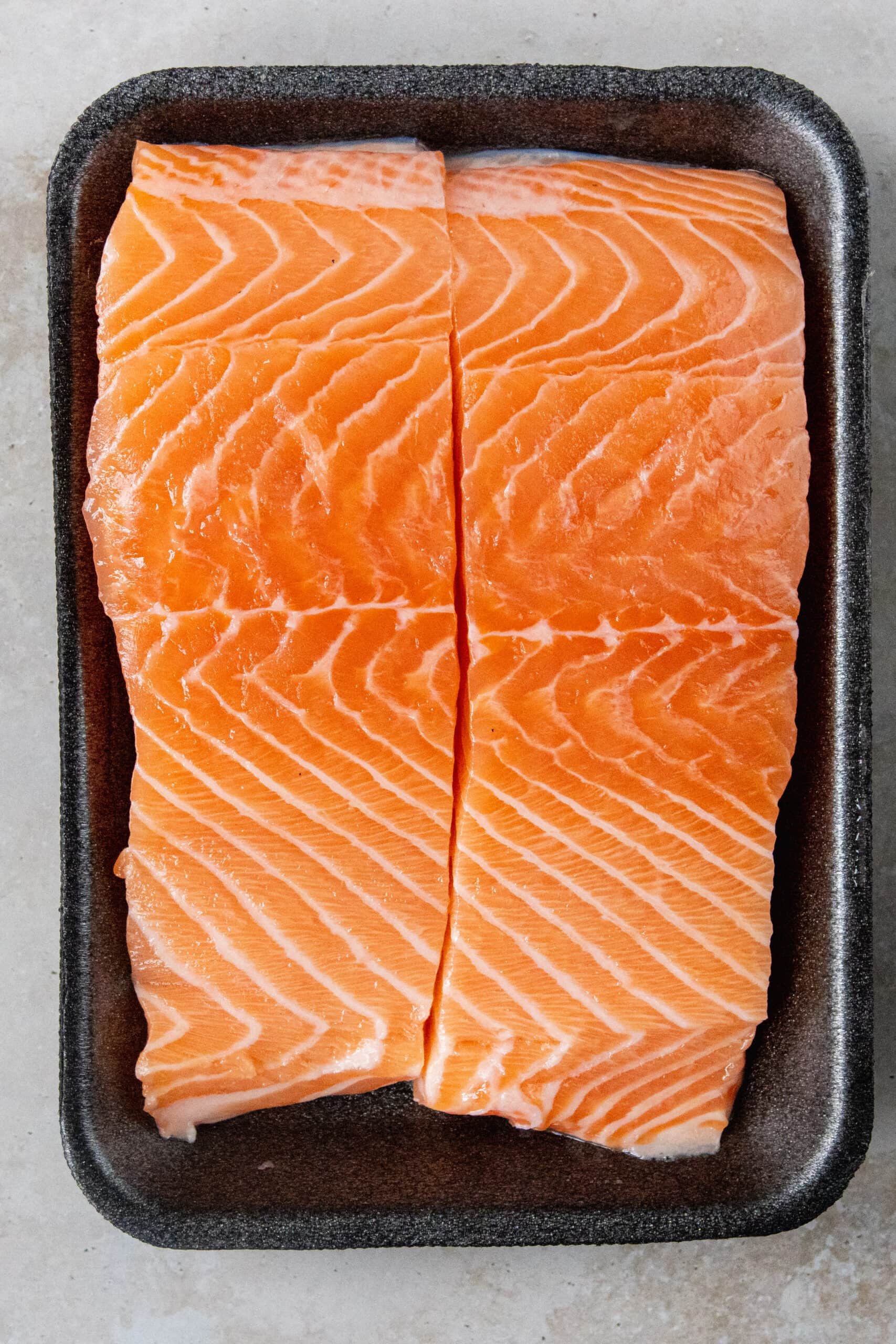
Farmed Salmon vs. Wild Salmon
According to the Cleveland Clinic, wild salmon is overall healthier and better for you. They have fewer calories and saturated fat, lower levels of contaminants and persistent organic pollutants (POPs), and little to no antibiotic issues. If you can afford wild salmon, buy it, but farmed salmon is a good alternative.
Food Safety
How to tell if salmon is bad
There are 3 easy ways to tell if your salmon has gone bad.
- Smells Fishy: Fresh salmon should have a mild ocean smell. Spoiled fish will smell fishy.
- Appearance: Fresh salmon should have a bright, even color with a firm texture. It may be spoiled if the flesh appears dull, discolored, or has a slimy texture.
- Sell-By Date: check the sell-by date. You want to consume or freeze salmon within 1-2 days of that date.
How long can raw salmon sit out?
According to the FDA, you don't want to leave seafood in the refrigerator for more than 2 hours. If the temperature is above 90F, that time goes down to 1 hour.
Can undercooked salmon make you sick?
Raw salmon has the potential to make you sick. Cooking salmon to 145F (6C) kills bacteria and parasites that could make you sick.
How to Defrost Salmon
Defrost Salmon in the fridge overnight or in a bowl of cold water. Salmon is good in the fridge for 1-2 days after defrosting.
If your salmon is vacuumed and sealed, you'll want to remove it and place it in a plastic bag. Botulism can grow in vacuum-sealed bags, so it is important to remove the salmon before defrosting it.
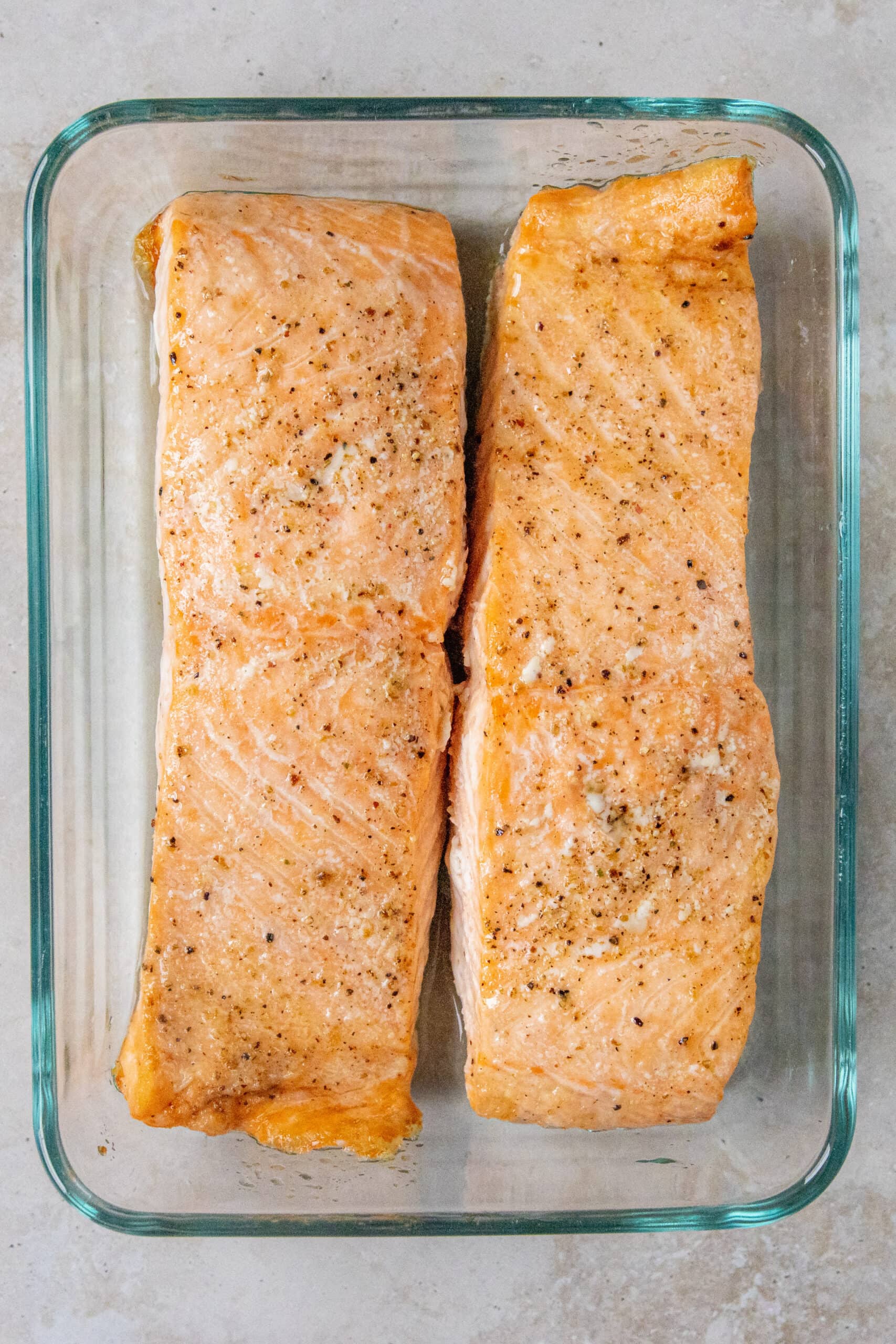
Cooking Questions
The best way to know if salmon is done is to check its temperature using a food thermometer. The USDA recommends cooking fish to a minimum internal temperature of 145F (63C).
You can also check the doneness of salmon by observing its appearance and texture. When the salmon is fully cooked, its flesh should be opaque and easily flake with a fork. The color of the flesh should be an even pink or orange, depending on the type of salmon.
You don't want to overcook salmon, it can become dry and tough.
Can you refreeze salmon?
- As long as you properly thaw your salmon in the refrigerator, the USDA says it's safe to refreeze it. Just make sure it hasn't spoiled before putting it back in the freezer.
How to store leftover salmon? - Store cooked salmon in an air-tight container in the fridge for 3-4 days.
How to reheat salmon? - Since salmon is lean, it's best to reheat it slowly. Reheat salmon in the oven at 275F for 15 minutes or until the internal temperature reaches 130F.
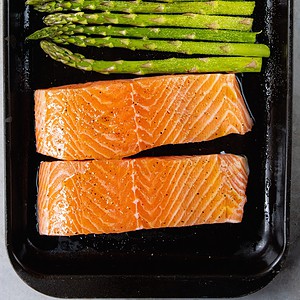
5 Ways to Cook Salmon
Ingredients
- 4 6oz Salmon Fillets
- 2 tablespoons olive oil
- salt & pepper
- your favorite spice blend optional
Instructions
Pan fry
- Heat 2 tablespoons of oil in a large nonstick skillet over medium-high heat. Pat salmon dry with a paper towel and season with salt and pepper or your favorite spice blend.
- Once the oil is hot, place the salmon in the skillet skin side up (if the salmon has skin). Cook until golden brown, about 4 minutes, then flip and cook for 4 more minutes or until the internal temperature is 145F.
Oven
- Preheat oven to 425F.
- Line a baking sheet with foil. Place salmon on the baking sheet and pat dry with a paper towel. Drizzle olive oil over salmon and season with salt and pepper or your favorite spice blend.
- Bake for 10 minutes if your salmon is 1 inch thick and 15 minutes if your salmon is 1 ½ inches thick. Your salmon is done when it has reached an internal temperature of 145F and can easily flake.
Broil
- Move the top oven rack so that it’s about 6 inches away from the top broiling element. Burn the broiler on high.
- Line a baking sheet with foil. Place salmon on the baking sheet and pat dry with a paper towel. Drizzle olive oil over salmon and season with salt and pepper or your favorite spice blend.
- Broil for 6-10 minutes. Your salmon is done when it has reached an internal temperature of 145F and can easily flake.
Parchment Pack
- Preheat the oven to 400F
- Lay out parchment paper on a flat surface.
- Place a salmon fillet, skin side down, in the center of the parchment paper. Drizzle with 1 tablespoon of olive oil. Season each salmon fillet with salt and pepper or your favorite spice blend.
- Fold the parchment paper in half over the salmon fillet, then fold the edges over and over until the packet is tightly sealed.
- Repeat with the remaining salmon fillets.
- Place the parchment packets on a baking sheet and bake for 15-20 minutes. The salmon is done when it has reached an internal temperature of 145F and can easily flake.
Air fryer
- Pat salmon dry with a paper towel. Drizzle olive oil over salmon and season with salt and pepper or your favorite spice blend.
- Preheat the air fryer to 400F.
- Place salmon in an air fryer ( skin side down if the salmon has skin), and cook for 8 minutes if the salmon is 1 inch thick and 12 minutes if it is 1 ½ inches thick. Your salmon is done when it has reached an internal temperature of 145F and can easily flake.

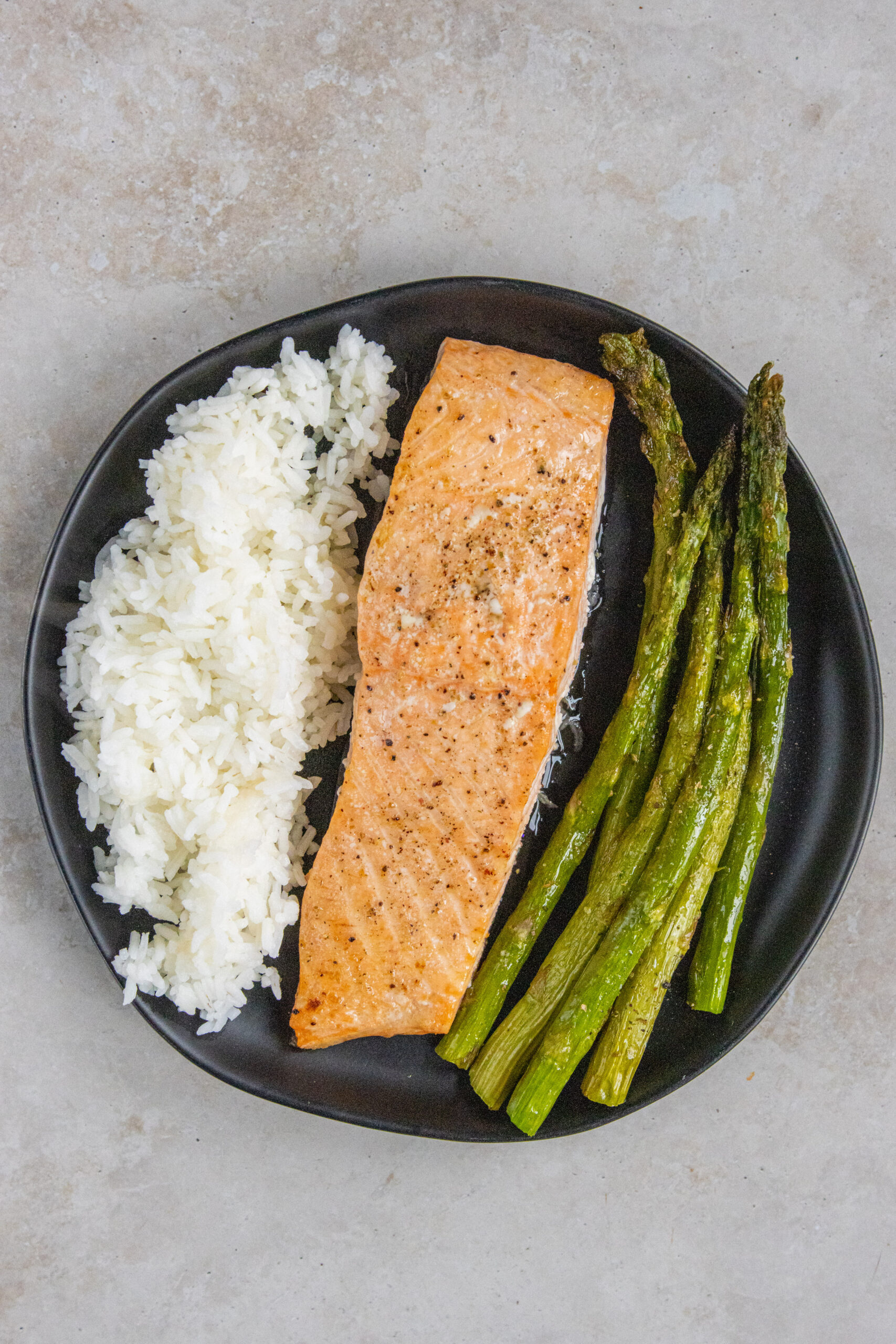
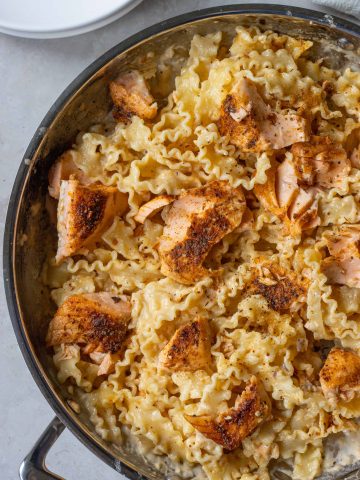
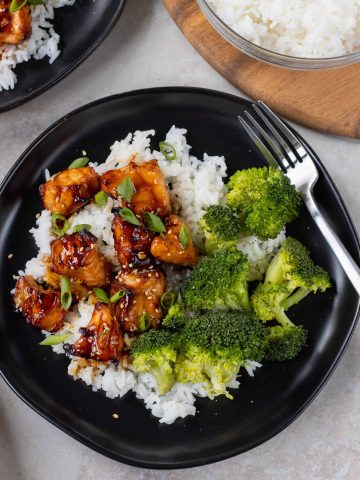
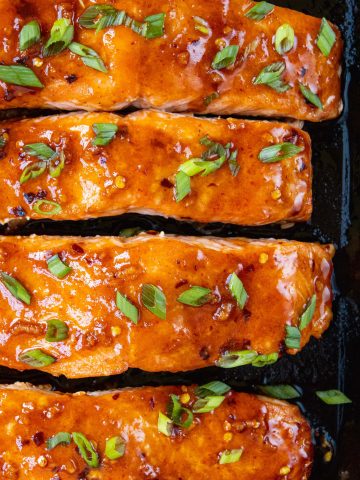
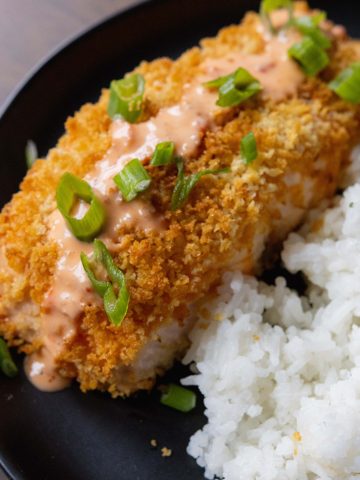
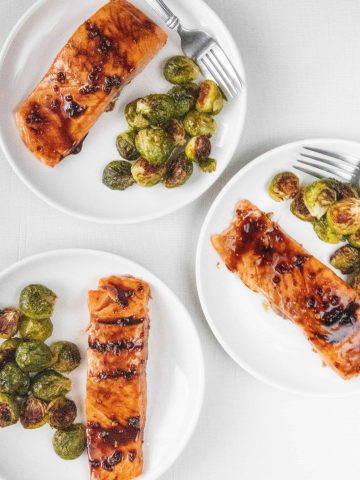
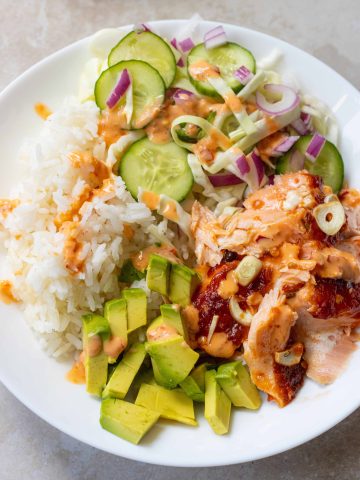
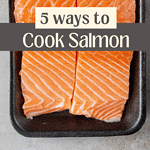
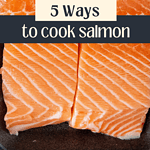
Did you make this recipe? Let me know!